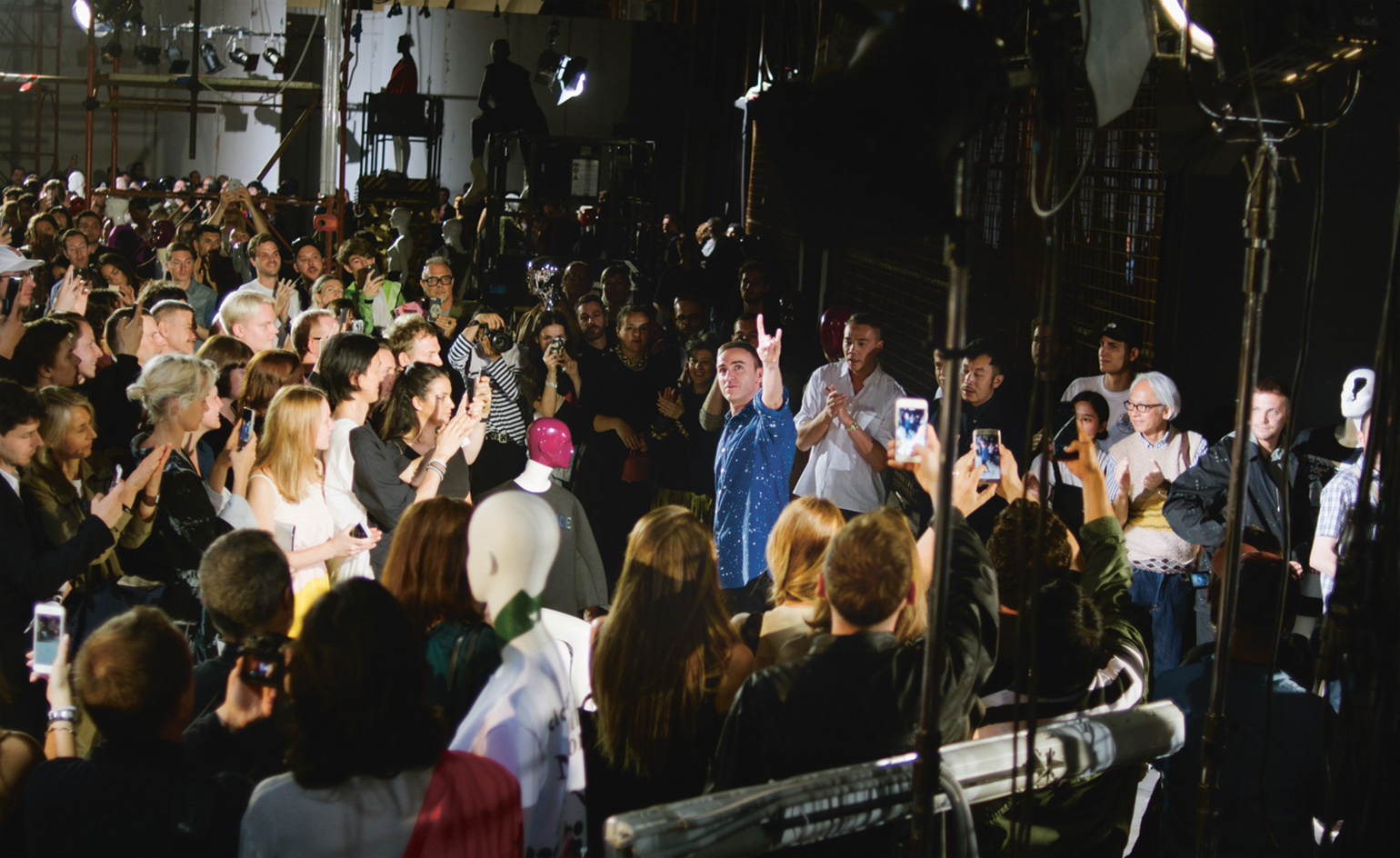
It is now the norm for fashion designers to dabble in other forms. Hedi Slimane, Rick Owens, Karl Lagerfeld and JW Anderson are all serious, serial dabblers. This is the age of the new polymath, the cross-disciplinary curator, the imperial taste-maker. But there is one designer who has gone much further; who, over the last 20 years, has relocated fashion, pulled it out of its self-referential loops and plugged it into a larger, more powerful network of ideas and influences.
Raf Simons originally trained in industrial and furniture design in Genk, Belgium, the country where he was born and raised and where his eponymous menswear line is based. After interning with Walter Van Beirendonck and then watching a Martin Margiela show in Paris, which Simons has described as nothing short of a revelation, he turned instead to fashion. He founded his own label in 1995.
That unconventional start explains Simons’ mould-breaking approach to designing clothing. ‘I always wanted to find other ways, explore other ways,’ he says. Focusing on menswear, Simons has subtly and insistently proposed new ways of dressing men. His radicalism has not only affected the way entire generations of men dress, but how generations of fashion designers create their clothes. The designs of youthful labels like Hood By Air or Off-White are tied up with ideas Simons has explored over the past 20 years.
Simons makes clothes meaningful because he understands when they are most meaningful to us. He summons up youthful experimentation and tribal allegiances, referencing the pinched-in shape of ill-fitting school blazers in slender suiting or the raiments of teenage dissent in torn and sloganed clothes that paid homage to counter-culture and band iconography. Simons has designed collections in homage to Kraftwerk, in collaboration with Peter Saville referencing his Joy Division and New Order album sleeves, and devoted one to Richey Edwards of the Manic Street Preachers.
Those references hint at the wider context in which Simons instinctively places his clothes. ‘I always like to do other things,’ Simons says. ‘Curating things, things that people didn’t know but things other than the collection, then going back.’ Returning to his collections after a creative excursion, Simons finds a form of renewal. He continues to explore other avenues: he designs a furnishing range with the Danish textile company Kvadrat (he has even used its fabrics for tailoring in his collections), has published books, curated exhibitions and edited an issue of i-D magazine.
Simons needs that renewal. He is one of the busiest designers working in modern fashion. From 2006, Simons has created womenswear: first under the Jil Sander label in Milan (alongside menswear), then between 2012 and the autumn of 2015, for Christian Dior in Paris. As of August this year, he is responsible for the clothes for men and women at Calvin Klein, a £6.1 billion juggernaut which may prove Simons’ biggest challenge to date. He will show his first designs for the brand in 2017.
The deftness with which Simons cross-fertilised his inspirations was evident at both Sander and Dior: a collection at the former featured designs inspired by Picasso ceramics (Simons has a fine collection at his apartment in Paris). For his Dior haute couture debut in July 2012, Simons translated the work of Californian contemporary artist Sterling Ruby into a strapless cocktail dress, painstakingly reproducing the artist’s spray-painted imagery with an intricate warp-dying technique that’s known as chiné à la branche. The piece was the precursor to a full-blown collaboration with Ruby for Simons’ A/W 2014 collection; for S/S 2017, meanwhile, he worked with the Robert Mapplethorpe Foundation, using more than 100 of the artist’s images on an entire collection of clothing.
The unveiling of Simons’ Mapplethorpe collaboration in Florence this June took place alongside a 20-year retrospective of the designer’s clothes on static mannequins, an experience more akin to a gallery opening, or even a performance piece. Which is, of course, precisely the point. ‘What I felt always in fashion is how the environment of fashion likes to put a stamp on you,’ says Simons. The defining act of Raf Simons’ two decades of design is his steadfast refusal to ever play by the rules. Simons doesn’t even break them. He simply makes his own.
Raf Simons is one of our 20 Game-Changers. Read about the other 19 here
As originally featured in the October 2016 issue of Wallpaper* (W*211)
INFORMATION
For more information, visit the Raf Simons website
Receive our daily digest of inspiration, escapism and design stories from around the world direct to your inbox.
-
 Curvilinear futurism meets subtropical beaches at Not A Hotel’s ZHA-designed Okinawa retreat
Curvilinear futurism meets subtropical beaches at Not A Hotel’s ZHA-designed Okinawa retreatZaha Hadid Architects has revealed the design for the first property in Not A Hotel’s futuristic new Vertex collection, coming soon to southern Japan
-
 Gorden Wagener leaves the helm of Mercedes-Benz design after 28 years with the company
Gorden Wagener leaves the helm of Mercedes-Benz design after 28 years with the companyThe German designer is stepping down from the role of chief design officer at Mercedes-Benz. We look back at his influence and impact on the world of automotive and luxury design
-
 These Christmas cards sent by 20th-century architects tell their own stories
These Christmas cards sent by 20th-century architects tell their own storiesHandcrafted holiday greetings reveal the personal side of architecture and design legends such as Charles and Ray Eames, Frank Lloyd Wright and Ludwig Mies van der Rohe
-
 Raf Simons to close eponymous label after 27 years
Raf Simons to close eponymous label after 27 yearsAnnounced in an Instagram post, Belgian designer Raf Simons – one of fashion’s most influential figures – says that his S/S 2023 collection will be his last
-
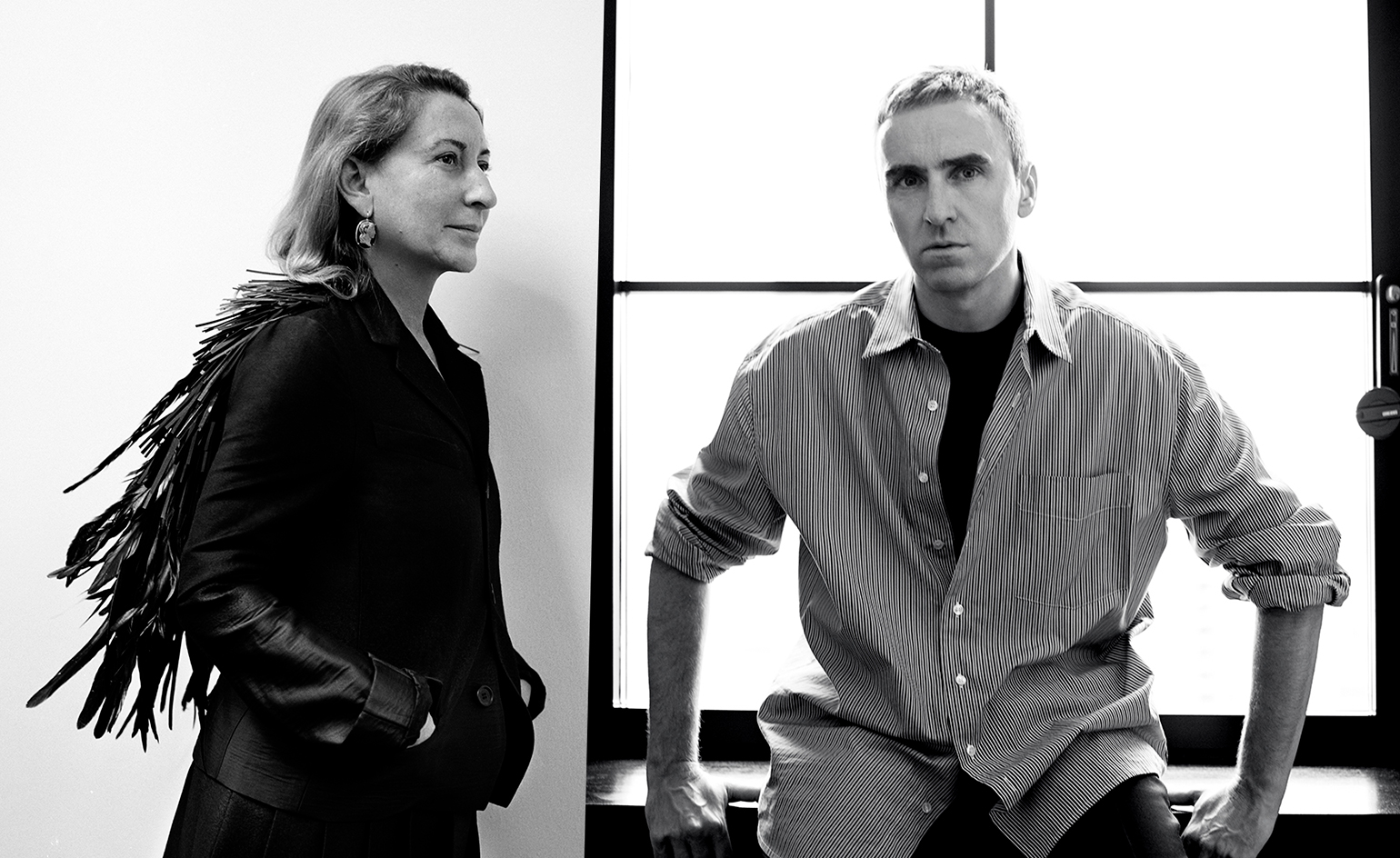 Raf Simons joins Prada as co-creative director
Raf Simons joins Prada as co-creative directorThe Belgian designer will join Miuccia Prada as co-creative director of the Italian label
-
 Calvin Klein 205W39NYC and Sterling Ruby collaborate on the brand’s new Paris HQ
Calvin Klein 205W39NYC and Sterling Ruby collaborate on the brand’s new Paris HQ -
 Best in shows: our standouts of the spring/summer 2018 collections
Best in shows: our standouts of the spring/summer 2018 collectionsPhotography: Melaine + Ramon. Fashion: Isabelle Kountoure and Jérôme André. Writer: Laura Hawkins
-
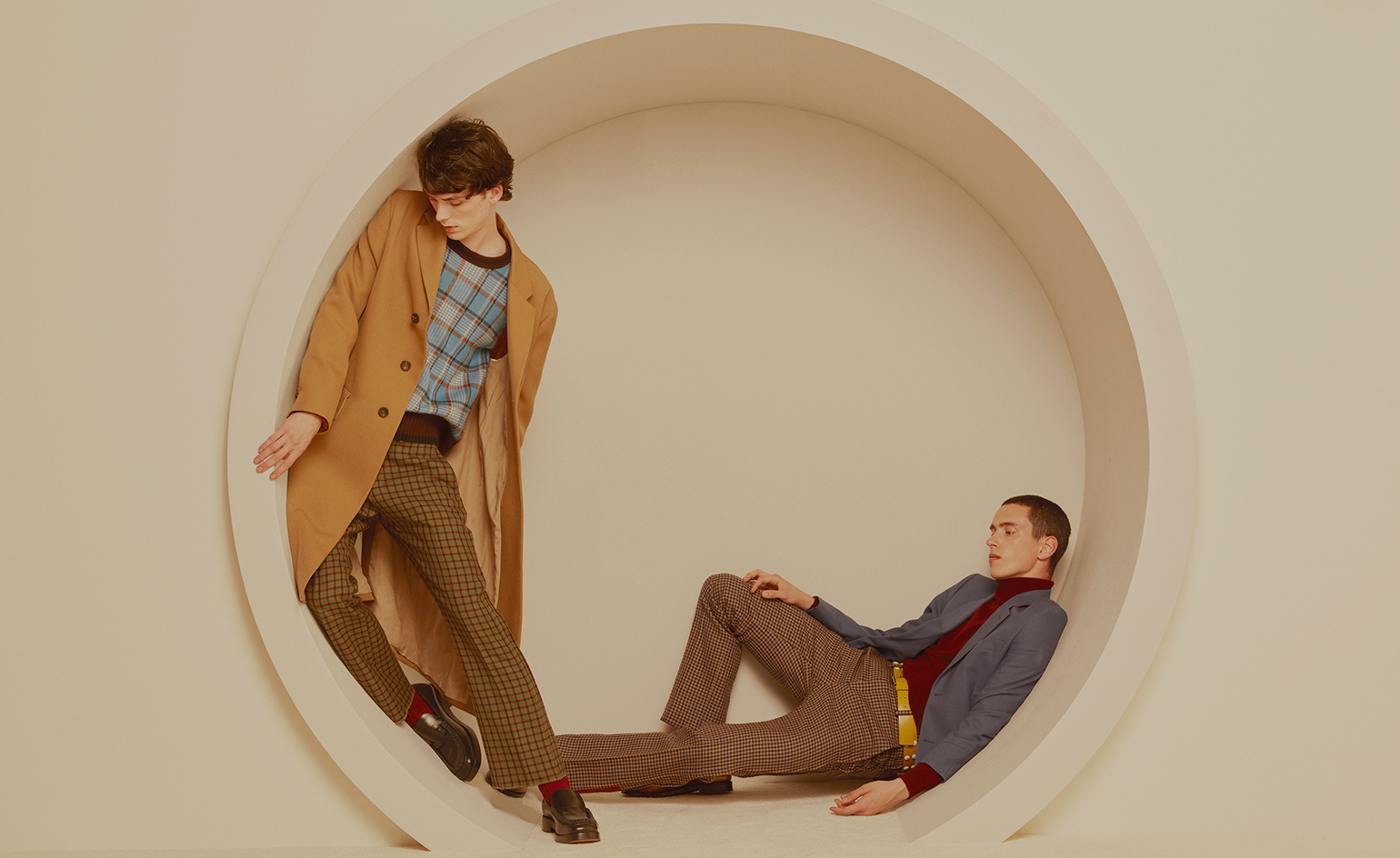 Tunnel vision: decked out in clashing checks and plaid, we’re dancing to a different beat
Tunnel vision: decked out in clashing checks and plaid, we’re dancing to a different beat -
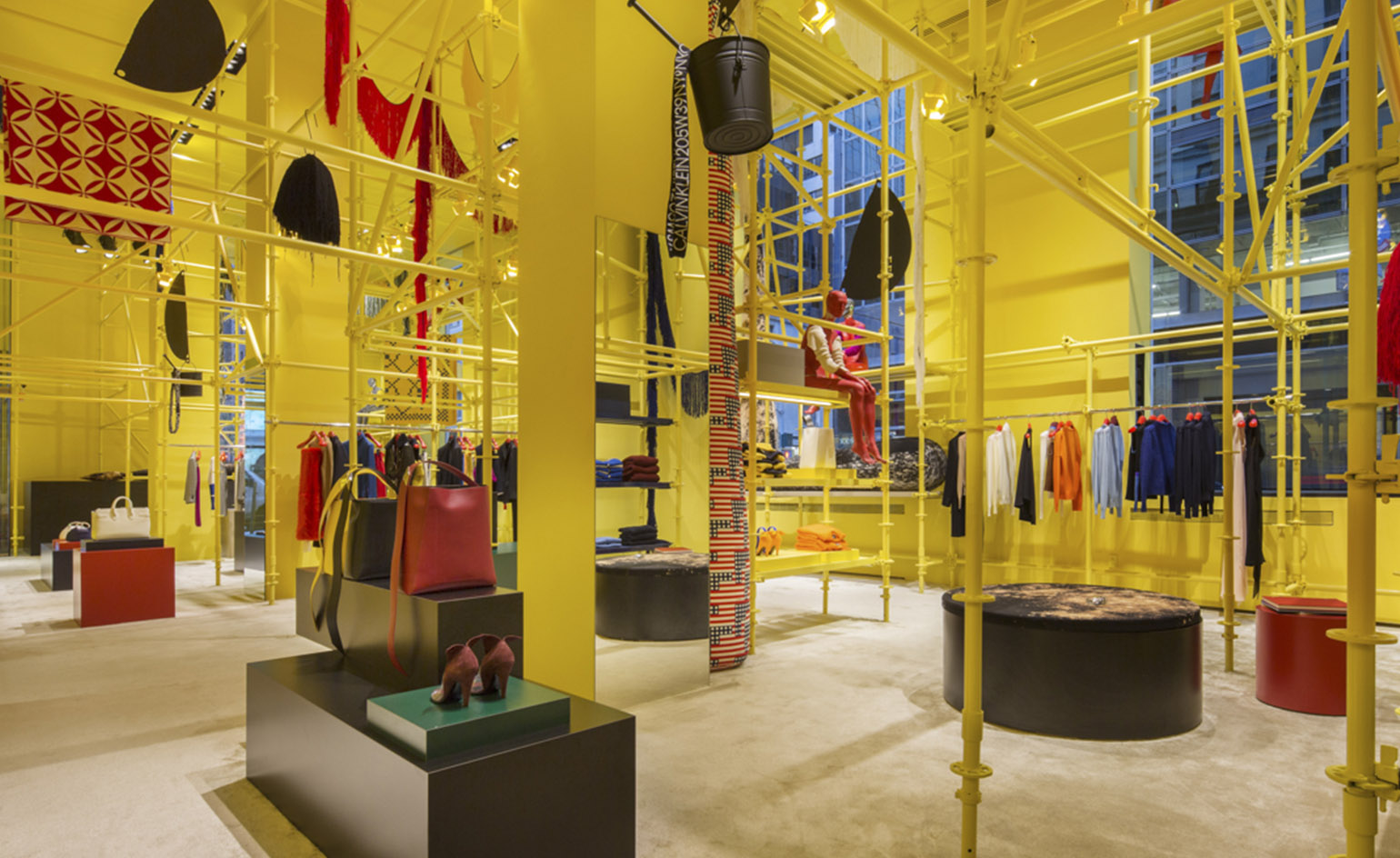 Reborn in the USA: Raf Simons unveils Sterling Ruby-designed Calvin Klein flagship
Reborn in the USA: Raf Simons unveils Sterling Ruby-designed Calvin Klein flagship -
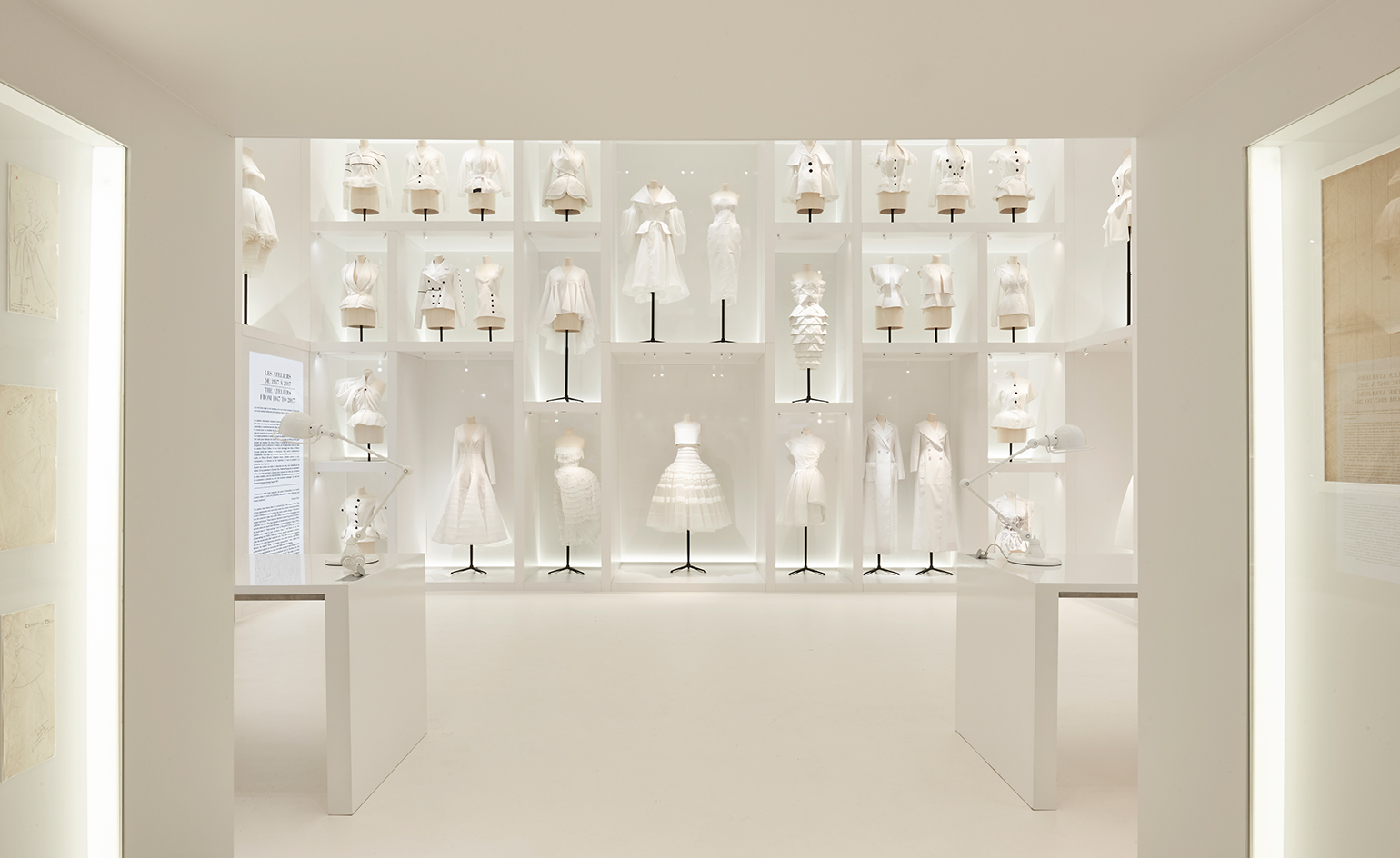 A monumental Dior retrospective opens at the Musée des Arts Décoratifs in Paris
A monumental Dior retrospective opens at the Musée des Arts Décoratifs in Paris -
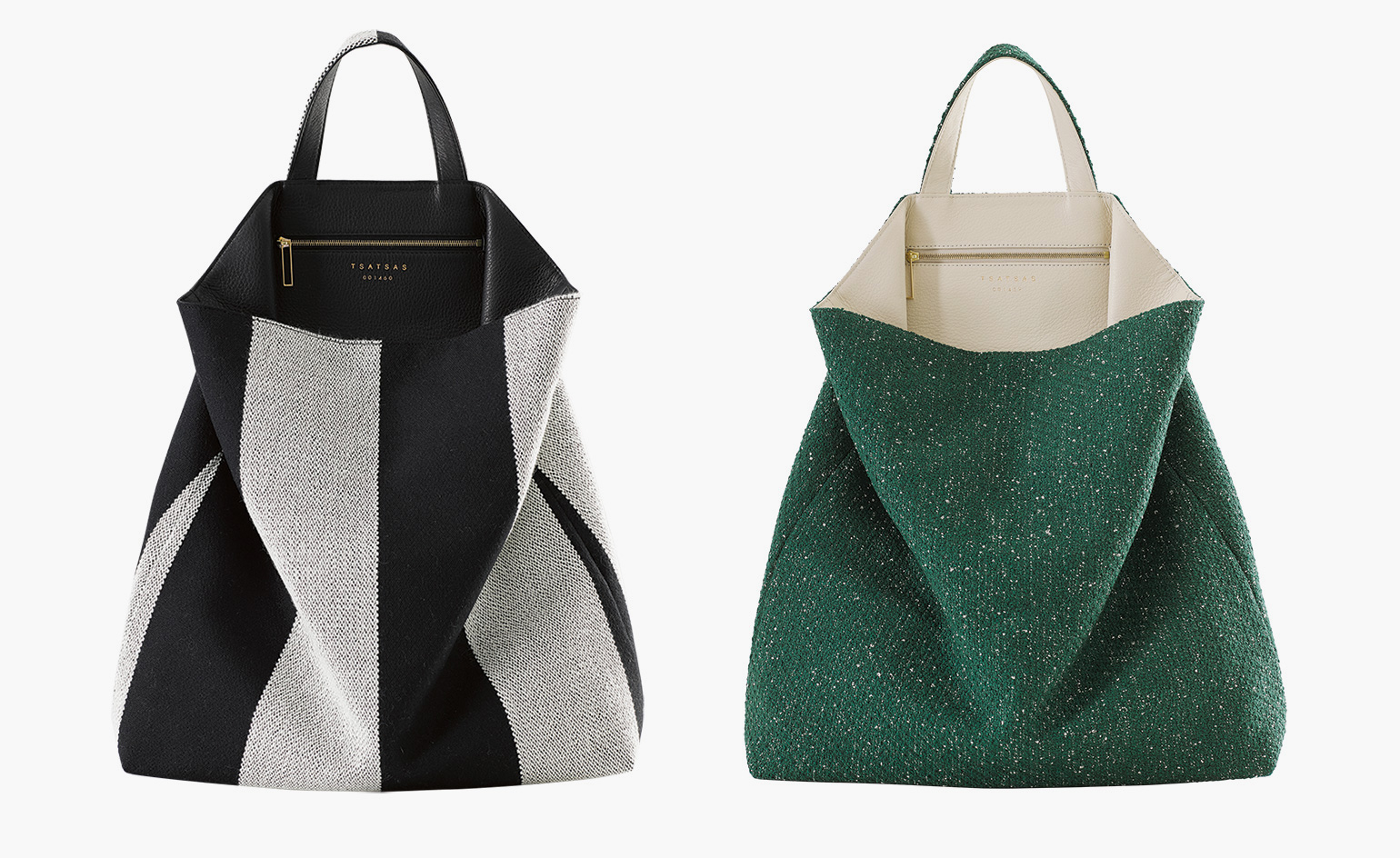 So far, so good: Tsatsas and Kvadrat bags are textile treats
So far, so good: Tsatsas and Kvadrat bags are textile treats